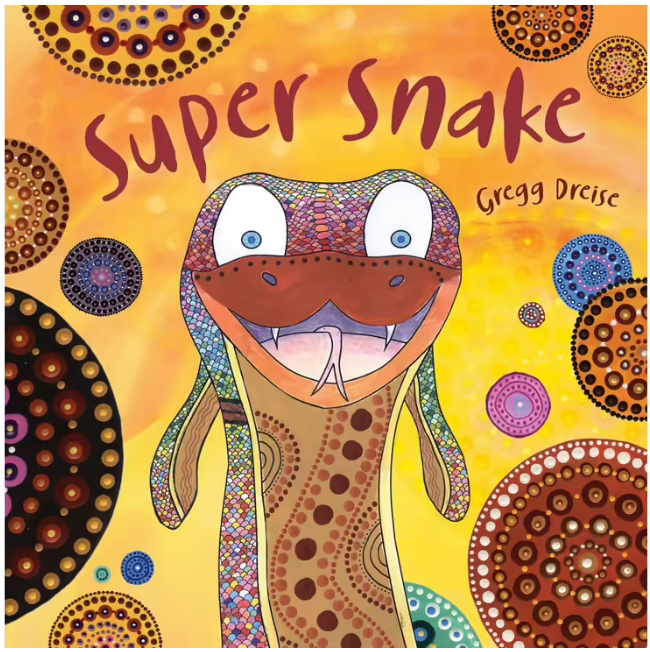
Super Snake: Year 2 English and Geography
All curriculum links in this unit use the latest national and state curriculums. Use this guide to compare codes across AC versions.
 Download and print this unit: AC Version | NSW Version | VIC Version
Download and print this unit: AC Version | NSW Version | VIC Version
Author & Illustrator: Gregg Dreise
Publisher: Magabala Books
Unit writer: Ingrid Gilholme
Synopsis: A charming morality tale, this book tells the tale of the Rainbow Serpent and the creation of the Darling/Barka River. In the Dreamtime, the bush was in the middle of a drought. A storm came and Mundegutta Gooriya the Super Snake was created. Way back, before Once-upon-a-time there was the Dreamtime and the bush was in the middle of a drought. After a storm, one large rainbow curved down. The Super Snake slithered down that rainbow on to the earth and promised the Elders he could help them find water. That Super Snake called out, 'You can't have a rainbow without water. 'Dhurraluwi guuma-li - Come together! Wantima - Rise up! Woorri - Share.' Like many, Gregg read The Rainbow Serpent by Dick Roughsey in primary school. He has always wanted to make a Rainbow Serpent book from his own Culture to highlight to people the diverse Countries and Cultures across Australia. Although people around the world may think of Aboriginal people as all being the same, there are hundreds of Countries on this continent. (Publisher synopsis)
Rationale: In this unit students will develop their understanding of the interconnections of First Nations Australians to a local Country/Place. Students will identify and explore words from First Nations Australians’ languages and discuss how characters and settings are connected in literature created by First Nations Australians. Students will identify figurative language in Super Snake, before innovating on the text to share information about their local area. After researching important local natural features, and learning about the First Nations Australians’ stories regarding their formation, students will draw a picture sharing their understanding, and create an idiom about the importance of caring for the land.
Cross-curriculum links: Geography; Aboriginal and Torres Strait Islander Histories and Cultures
English concepts: Narrative; Point of View; Context
Overarching questions:
- How does listening to stories by First Nations Australians and their connections with land, sea and animals change our perspective?
- How can our language choices engage the audience?
- How do we care for places in our local environment?
Rich assessment task: Students will investigate and research an important local natural feature, including a discussion of the natural features of places identified in Aboriginal Dreaming stories and/or creation accounts of the Torres Strait. Students will share their research by drawing an illustration detailing the local feature and creating an idiom to consider different ways it can be cared for.
 Additional teacher resources:
Additional teacher resources:
- Video: Using First Nations literature in the primary classroom
- Article: First Nations students and the English curriculum area